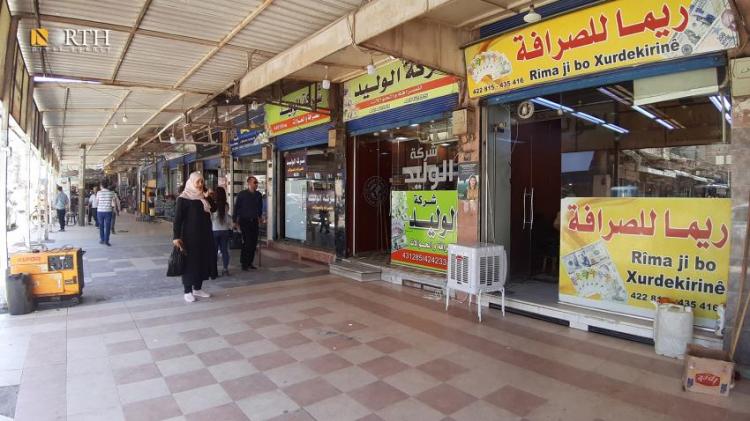Syrian Pound Falls Again After Brief Recovery Following Sanctions News
By Kardo Roj
DAMASCUS, Syria (North Press) – The Syrian pound resumed its downward trajectory on Thursday, losing value against the U.S. dollar after showing modest gains earlier this week in response to announcements of potential sanctions relief.
According to Thursday’s trading data published by currency monitoring platform “Lira Today,” the exchange rate reached 9,600 SYP to the dollar for buying, and 9,900 SYP for selling on the informal market. The Central Bank of Syria maintained its official rate at 11,000 SYP per dollar for buying and 11,110 SYP for selling.
The recent fluctuations reflect continued instability in Syria’s foreign exchange markets, where rates are heavily influenced by political developments, import demand, and remittance flows rather than central bank interventions.
The temporary strengthening of the lira earlier this week followed reports that U.S. President Donald Trump had announced plans to lift sanctions on Syria during a high-profile visit to Saudi Arabia. The Syrian pound had briefly appreciated to below 8,000 SYP per dollar in several regional markets, particularly in areas controlled by the Autonomous Administration of North and East Syria (AANES), where economic activity is partly buffered by local governance structures and U.S. military presence.
Traders in Qamishli’s money exchange district told North Press that demand for hard currency surged again on Thursday amid uncertainty over when — and if — the sanctions will actually be lifted.
Discrepancy Between Official and Black Market Rates
The growing disparity between the central bank’s official rate and the street market underscores the lack of confidence in state institutions. For most Syrians and businesses, the informal exchange rate is the only reliable benchmark for transactions, especially in regions outside of direct government control.
In AANES-administered areas in northeast Syria, where cross-border trade with Iraq and the Kurdistan Region plays a key role, the weakening of the pound poses challenges for importers and residents alike. While the SDF-secured region has developed relative economic stability, it is not immune to the broader national crisis.
A shopkeeper in Hasakah told North Press, “Even when the rate improved briefly, suppliers didn’t reduce prices. People are waiting for real changes, not just promises.”
Broader Economic Implications
Syria’s economy remains in a fragile state after over a decade of war, sanctions, and institutional breakdown. The country’s foreign currency reserves are severely depleted, inflation is rampant, and millions remain dependent on remittances or humanitarian aid. The recent political shifts — including President Trump’s meeting with Syria’s transitional leader Ahmed al-Shar’a and discussions of normalizing relations — have created cautious optimism but not yet concrete economic recovery.
The impact of currency instability is most directly felt in the cost of daily essentials. Food prices, medical supplies, and fuel costs are closely tied to the dollar rate, making every fluctuation a source of anxiety for ordinary Syrians.
Outlook: Volatility Likely to Persist
Economists warn that unless structural reforms are introduced and international sanctions are formally lifted with clear economic reintegration mechanisms, the Syrian pound will likely continue its unpredictable path.
In northeast Syria, AANES officials are monitoring developments closely, aiming to shield local markets from broader economic shocks through parallel trade arrangements and ongoing humanitarian cooperation with international agencies.
With the regional political landscape shifting — including Qatar and Saudi Arabia’s renewed roles in diplomatic engagement — the next few months will be critical in determining whether Syria’s economy begins a slow path to stabilization or slips further into crisis.

